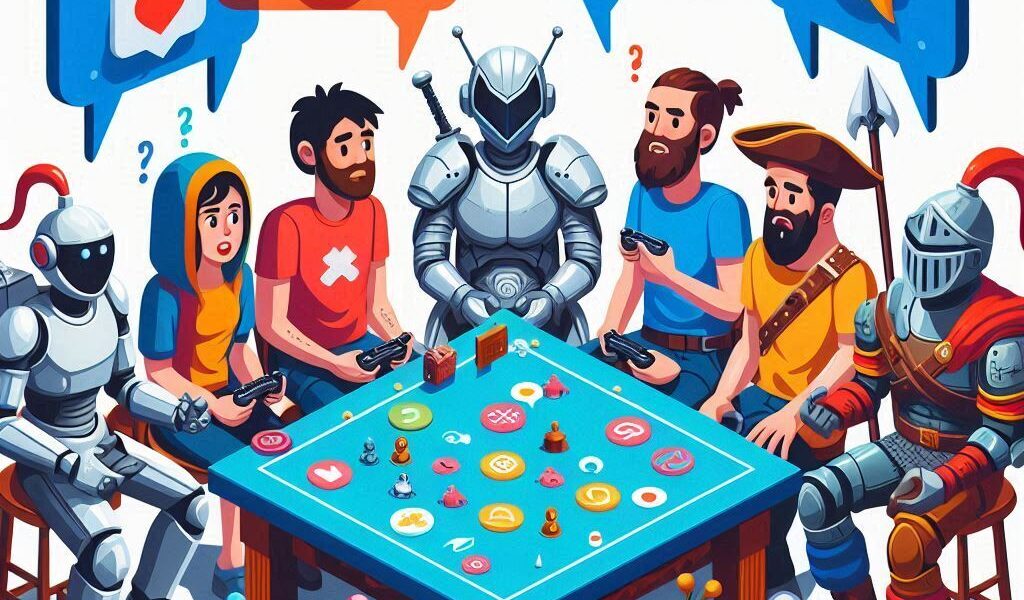Action games have long held a special place in the hearts of gamers, captivating audiences with their adrenaline-fueled gameplay, fast-paced combat, and heart-pounding experiences. From iconic classics like Street Fighter and DOOM to modern masterpieces like The Last of Us Part II and God of War, action games have evolved to include intricate narratives, seamless mechanics, and immersive environments that constantly push the boundaries of excitement. But what exactly makes action games so captivating, and how do they keep players engaged and on the edge of their seats?
In this exploration of action games, we will delve into the core elements that make them so thrilling. By breaking down gameplay mechanics, narrative structure, sound design, and more, we’ll understand how these games tap into player psychology, maintain engagement, and deliver experiences that leave a lasting impact.

Part 1: Dynamic Gameplay and Combat Systems
Fluidity of Movement and Control
At the heart of any successful action game is its gameplay and combat systems, which are designed to feel responsive and intuitive. The fluidity of movement is crucial in making players feel empowered, giving them direct control over their characters’ actions. A game like Devil May Cry 5 exemplifies this, with smooth and fast-paced combat that allows players to pull off complex combos with ease. The seamless transition between attacking, dodging, and countering gives players the sense that they are in complete control of the battlefield, creating an adrenaline rush with every encounter.
This dynamic responsiveness is achieved through careful game design, ensuring that every button press results in immediate feedback. Combat should feel intuitive, meaning that players can focus on strategy and skill rather than worrying about whether the game will respond to their commands. Whether the game is a first-person shooter or a hack-and-slash adventure, the connection between the player and the character’s movement is paramount in maintaining excitement.
Evolving Combat Mechanics
Action games often maintain engagement by progressively introducing new mechanics that challenge the player. As players advance through the game, they may unlock new weapons, abilities, or enemy types that force them to adapt their strategies. For example, in Sekiro: Shadows Die Twice, the player is constantly required to learn new combat techniques, such as precise parrying and using special tools, as they encounter tougher enemies and bosses.
This evolving gameplay ensures that players are constantly challenged, preventing the experience from becoming repetitive. Games that fail to introduce new mechanics or escalate difficulty tend to lose their intensity, as players begin to feel as if they have “mastered” the game too quickly. By continuously layering new challenges, action games maintain the sense of tension and excitement that keeps players engaged.
High Stakes Combat
Another key factor in keeping players on edge is the high stakes that action games often impose. Whether it’s the limited health resources in survival-based games like Resident Evil or the brutal difficulty of titles like Dark Souls, action games often emphasize the consequences of failure. Knowing that one mistake could lead to a game over or that a particularly tough boss fight could take hours to conquer keeps players fully invested in each encounter.
This sense of danger is heightened by the unpredictability of enemies or combat situations. In games like DOOM Eternal, where enemies spawn dynamically and the player is constantly on the move, the fast-paced action and high stakes create an intense experience that demands the player’s full attention.
Part 2: Immersive World-Building and Storytelling
Engaging Storylines
While action games are primarily known for their fast-paced gameplay, the best titles often pair this with compelling narratives that drive player investment. Games like The Last of Us Part II balance intense combat with deeply emotional storytelling, making players feel connected to the characters and their struggles. This connection enhances the experience, as players are not just fighting for survival but are also invested in the outcome of the story.
Story-driven action games often use pacing to create tension, alternating between quieter narrative moments and intense action sequences. This ebb and flow prevents the game from feeling monotonous and allows the player to appreciate both the story and the gameplay. By making the stakes of the story personal, action games can amplify the tension during combat, as players are fighting for something larger than just victory—they are fighting for the survival or success of characters they care about.
Environmental Immersion
The worlds in action games are more than just backdrops—they play a crucial role in keeping players on edge. Detailed environments, from the post-apocalyptic wastelands of Mad Max to the vibrant, dangerous streets of Cyberpunk 2077, draw players in and make the action feel more intense. When players are immersed in the world, every combat encounter feels more visceral and impactful.
This immersion is often achieved through a combination of atmospheric design, level layout, and environmental storytelling. Action games like God of War use their environments to tell stories, with ancient ruins, towering mountains, and dark forests all contributing to the game’s mythological setting. These environments are not just aesthetically pleasing—they influence gameplay by providing players with opportunities for tactical combat, exploration, and puzzle-solving, enhancing the overall experience.
Part 3: Sound Design and Visual Cues
Impactful Sound Design
Sound design is often an overlooked aspect of action games, but it plays a critical role in creating tension and excitement. The roar of gunfire, the clang of swords, or the ominous footsteps of an approaching enemy can all elevate the player’s adrenaline levels. A well-timed musical score can make a boss fight feel epic or turn a quiet moment of exploration into a nerve-wracking experience.
In action games like DOOM Eternal, the heavy metal soundtrack ramps up during combat sequences, mirroring the intensity of the gameplay and encouraging players to get into the rhythm of the action. Meanwhile, games like Resident Evil 2 use ambient soundscapes to create tension, with creaking doors, distant growls, and sudden stings of music that make every corner feel dangerous. These auditory cues keep players alert and emotionally invested in the action.
Visual Feedback and Cues
In addition to sound, visual feedback is essential in keeping players engaged. Action games use visual cues to signal danger, such as flashing health bars, on-screen warnings, or enemy movements that hint at upcoming attacks. For example, in Hades, enemies telegraph their attacks with visual indicators, allowing players to anticipate and react quickly to avoid damage.
Effective visual feedback can also create a sense of power for the player. Games like Devil May Cry 5 or Bayonetta use visual effects like slow motion or dynamic camera angles during critical moments in combat, making successful hits and combos feel satisfying and impactful. This visual spectacle heightens the thrill of the action and gives players a sense of mastery as they pull off increasingly difficult maneuvers.
Part 4: Player Psychology and Engagement
Challenge and Reward
Action games are built on the principle of challenge and reward. Players are motivated by the sense of accomplishment that comes from overcoming difficult obstacles, whether it’s defeating a challenging boss or completing a complex combat sequence. By balancing difficulty with fair rewards—such as new abilities, weapons, or story progression—action games tap into the player’s desire for achievement.
Games like Dark Souls are famous for their punishing difficulty, but they also reward players with a deep sense of satisfaction after each victory. This cycle of challenge and reward keeps players returning for more, despite the frustration that often accompanies failure. It’s this emotional rollercoaster that defines many action games, creating an addictive experience where players are constantly striving for mastery.
Player Agency
One of the reasons action games keep players so engaged is the sense of agency they provide. Players feel like they are in control of the action, making split-second decisions that impact the outcome of the game. This sense of empowerment is critical in creating a thrilling experience, as players are not passive observers but active participants in the action.
Games that offer multiple playstyles or choices in how to approach combat—such as Ghost of Tsushima, where players can choose between stealth and direct combat—give players even more agency. This flexibility allows for creativity in gameplay, making each encounter feel fresh and exciting.
Conclusion
Action games are masters of tension, excitement, and player engagement. By combining responsive and evolving gameplay mechanics, immersive worlds, impactful sound and visual design, and psychological reward systems, these games create experiences that keep players on the edge of their seats. Whether it’s the thrill of high-speed combat, the challenge of a difficult boss fight, or the emotional stakes of a gripping narrative, action games are uniquely designed to deliver heart-pounding moments that resonate long after the controller is set down. As technology continues to advance, the future of action gaming promises even more immersive and exhilarating experiences for players to enjoy.




